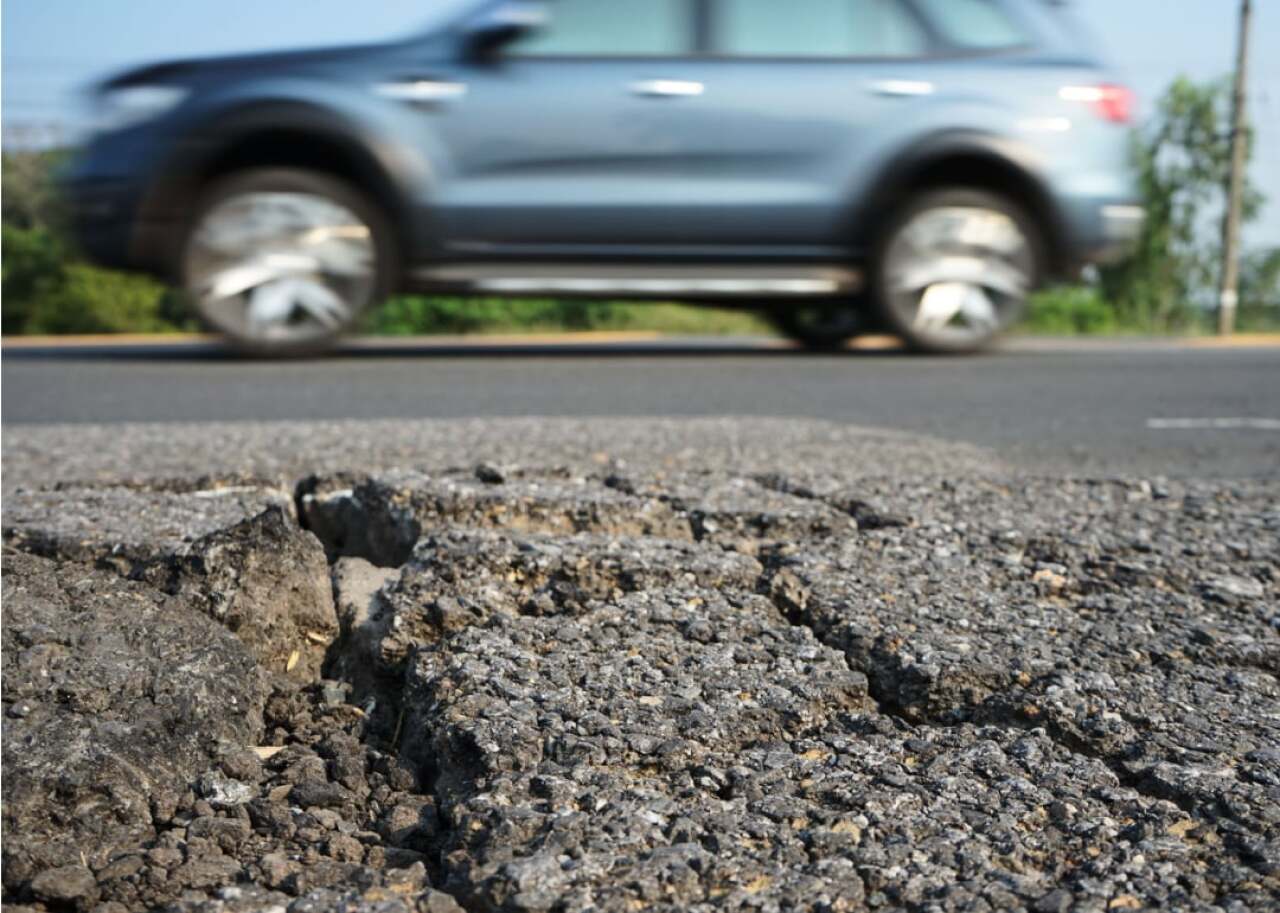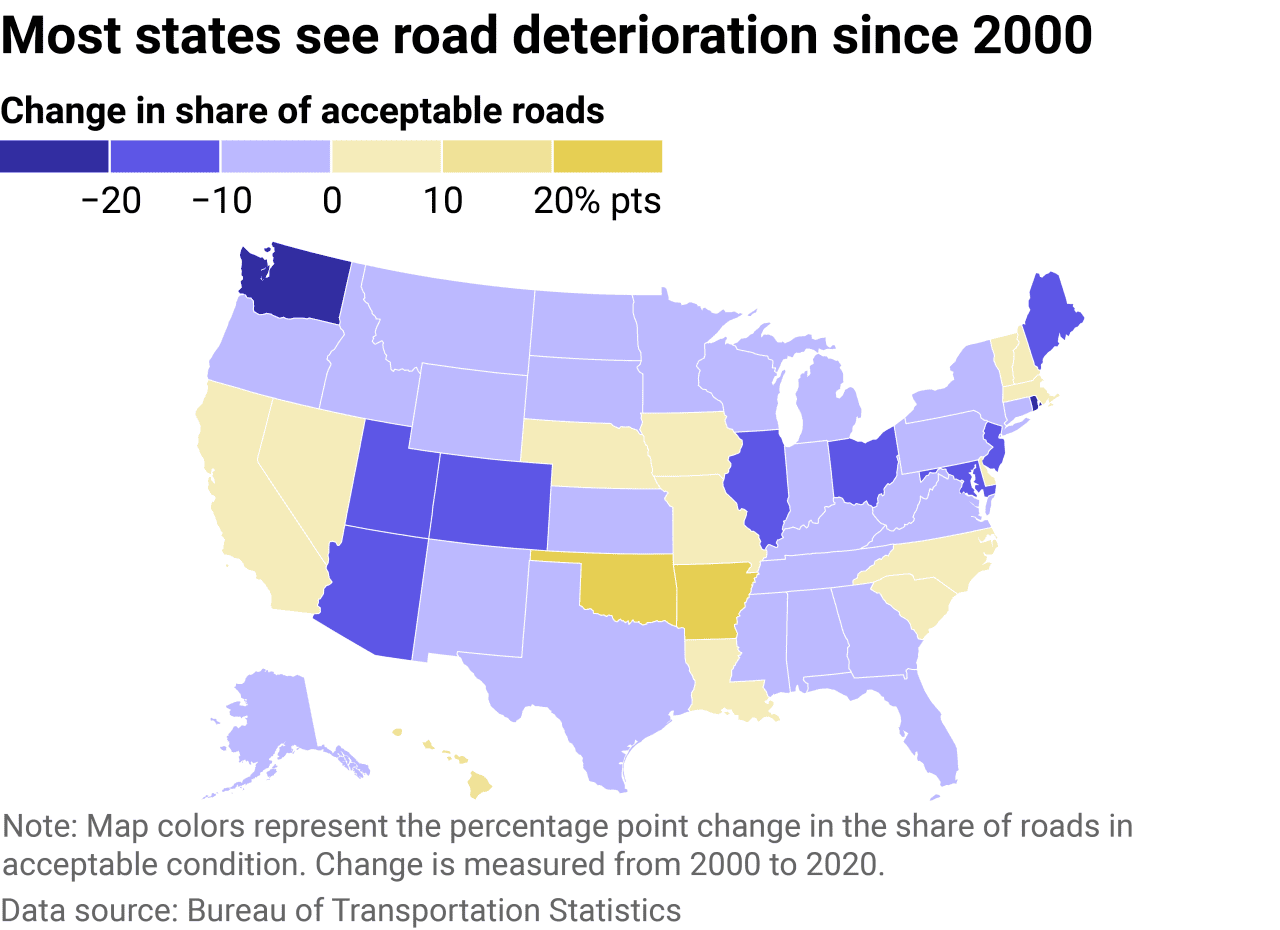How road conditions in Texas have deteriorated since 2000

Suwichan // Shutterstock
How road conditions in Texas have deteriorated since 2000
The United States boasts an impressive interstate network of 4.2 million miles of roads—but underlying that reputation is a backlog of $786 billion in needed repairs, according to the American Society of Civil Engineers. On average, the society estimates, American motorists spend a collective $130 billion on extra vehicle repairs and fuel costs as a result of driving on poor-quality roads and bridges.
In 2000, 82.6% of U.S. roads were considered acceptable to drive on, according to federal standards, which look at how rough or smooth a road surface is based on how much vibration a car’s suspension has to absorb while driving on it. By 2020, a smaller share—81%—of U.S. roads were rated acceptable.
TruckInfo.net used Bureau of Transportation Statistics data to analyze how road conditions in Texas have changed over the past two decades, as part of a larger analysis of U.S. road conditions. The analysis considers the change in the share of roads considered to be in acceptable condition.
Roads in the Lone Star State have deteriorated in the past 20 years—in 2000, just under 83% of roads were in acceptable condition while 77.6% were in 2020. In response to unsafe driving and incidents stemming from roads in poor conditions, the Texas legislature passed House Bill 1885 in June, which permits local authorities to temporarily change the speed limit on roads during inclement weather, construction, or because the road itself is in bad shape.
Road condition is determined by the International Roughness Index, which measures deviations from pavement surfaces significant enough to affect driving. Roads with IRI values below 170 are considered to be in acceptable condition, while anything above 170 is considered poor condition. Data represents the percentage point change from 2000 to 2020.

TruckInfo.net
Fewer roads are in acceptable condition in 2020
Across the country, the change in the share of roads in acceptable condition over the past two decades does not appear to be a significant downgrade. However, the nationwide change can be misleading because while some states have improved their road infrastructure, some states have seen a massive decrease in road quality.
States like Rhode Island and Washington have seen over 20% of their roads degrade into poor condition. Other states, including Arkansas and Oklahoma, have conversely seen significant improvements in the quality of their roadways, and are planning to invest more by implementing state-initiated projects and tax hikes. California, which has seen road conditions improve, depends on higher-than-average gas taxes to fund road repair and construction. To learn more about changing road conditions in each state, read the national analysis.
This story features data reporting by Paxtyn Merten, writing by Colleen Kilday, and is part of a series utilizing data automation across 51 states.
![]()
